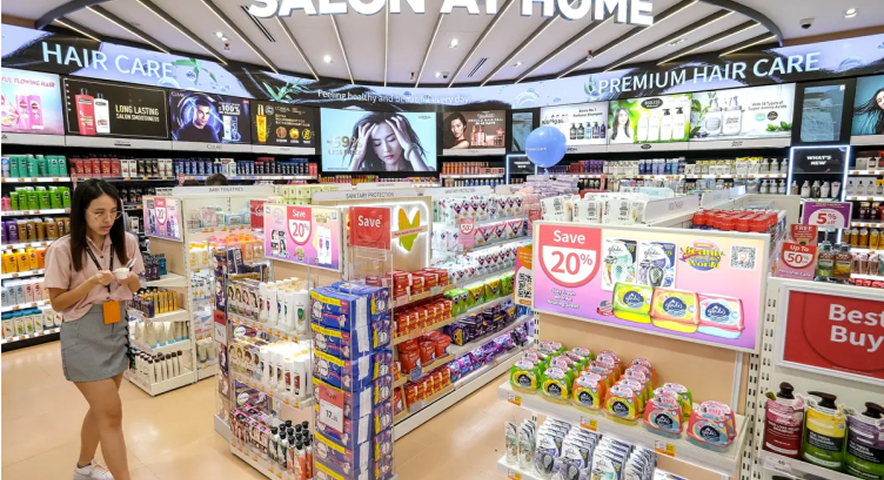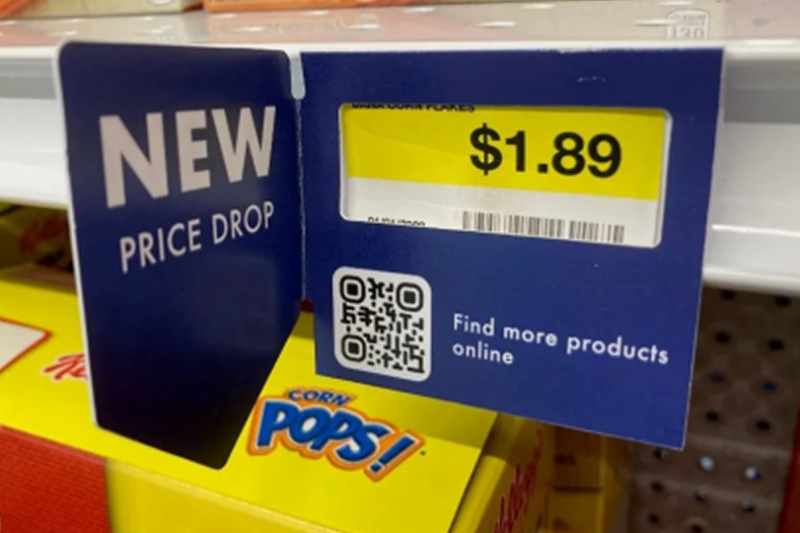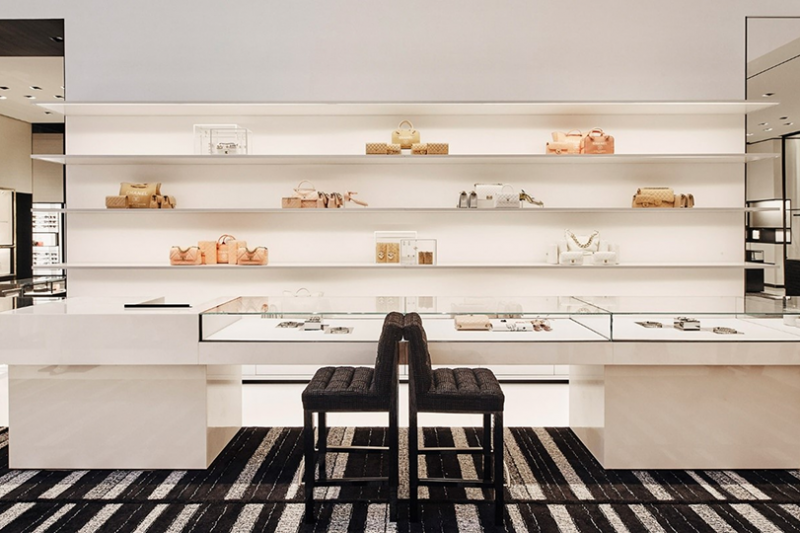You can have the most visually stunning POSM (Point-of-Sale Materials), but if it’s in the wrong spot, it may never get noticed. Just like real estate, retail space runs on the principle of location, location, location.
Why POSM Placement Is Half the Battle
POSM works best not just because it looks good, but because it’s placed where shoppers are most likely to see and respond to it. It’s not just about the “design”. It’s also about the “destination.”
Let’s break down the science behind placement with examples you’ll recognise in Malaysian retail.
1. The Hot Zone: Eye-Level = Buy-Level
The shopper’s eye-level, typically 4 to 5 feet from the ground, is prime real estate. It’s where attention is naturally drawn. POSM placed here has the highest conversion potential.
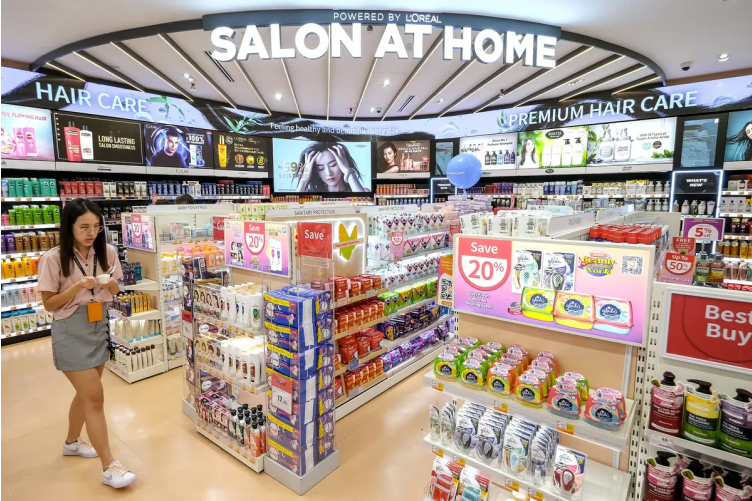
In many outlets in Malaysia, you’ll notice branded shelf strips and price tags placed directly at eye-level. These are typically colour-coded and paired with limited-time offers.
Tip: Collaborate with retailers to secure this “hot” zone, and make sure your POSM stands out once it’s there.
2. Entry Zones and Decompression Zones
Shoppers entering a store usually ignore the first 3–5 steps as they’re adjusting to the space. But right after that is a powerful window for first impressions.

At supermarkets, large brands like Nestlé or Milo often place standees or pallet displays just past the entrance, often near the promo section. These catch the eye before a shopping list kicks in.
Tip: Don’t place POSM right at the door. Place it just after the decompression zone to be seen and processed.
3. Endcaps: The Golden Corners of Retail
Endcaps are the shelf spaces at the end of an aisle. These are high-traffic areas with massive visibility, especially if the aisle faces the store’s main thoroughfare.
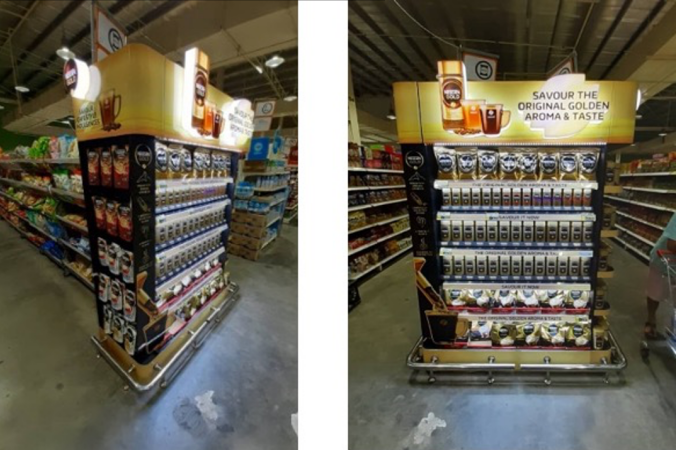
FMCG brands like Nescafe or Maggi regularly book endcap displays, often paired with banners, and LED shelf strips.
Tip: If your budget allows, negotiate endcap presence with a bundled placement package. It outperforms in-aisle placement by 3–5x on average.
4. Checkout & Queue Path: Last-Minute Goldmine
Shoppers waiting to pay are a captive audience. Small items + emotional triggers = impulse buys. Perfect spot for compact POSM.

Look at how brands like KitKat use counter-top shelves to encourage last-minute grabs.
Tip: Use this space for convenience, novelty, or FOMO-driven items. The POSM should scream urgency — “Buy me now!”
5. Category Anchors: Guiding the Shopper’s Eye
Shoppers don’t always know what they want. Category-level signage and POSM help frame the aisle narrative and anchor decisions.
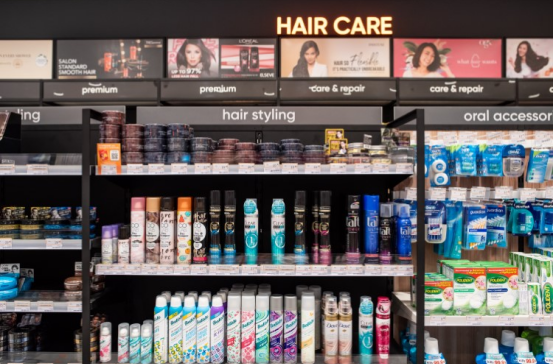
The hair care aisle is a great example. Each section is distinctly framed with headers like “premium,” “care & repair,” and “hair styling,” offering a clear mental map for shoppers. Products are further segmented horizontally and vertically by use case and format, from sprays to waxes to dry shampoo.
This is POSM doing its job as a silent retail guide.
Tip: Anchor your POSM with signage that reflects how customers think: by benefit, by use, or by shopper need. A clear category framework helps emerging brands get discovered without fighting for attention, because they’re now in the right “mental shelf.”
Good POSM Needs Good Positioning
POSM placement is shopper psychology meets retail physics. When you understand how customers move, think, and decide in-store, you can place your brand directly in their path of action.
Ask yourself:
- Is your POSM in the line of sightor lost in clutter?
- Is it actionable — clear CTA, promo, or price?
- Is it alignedwith how the store flows?
Because when it comes to POSM, what you say matters, but where you say it can make all the difference.

